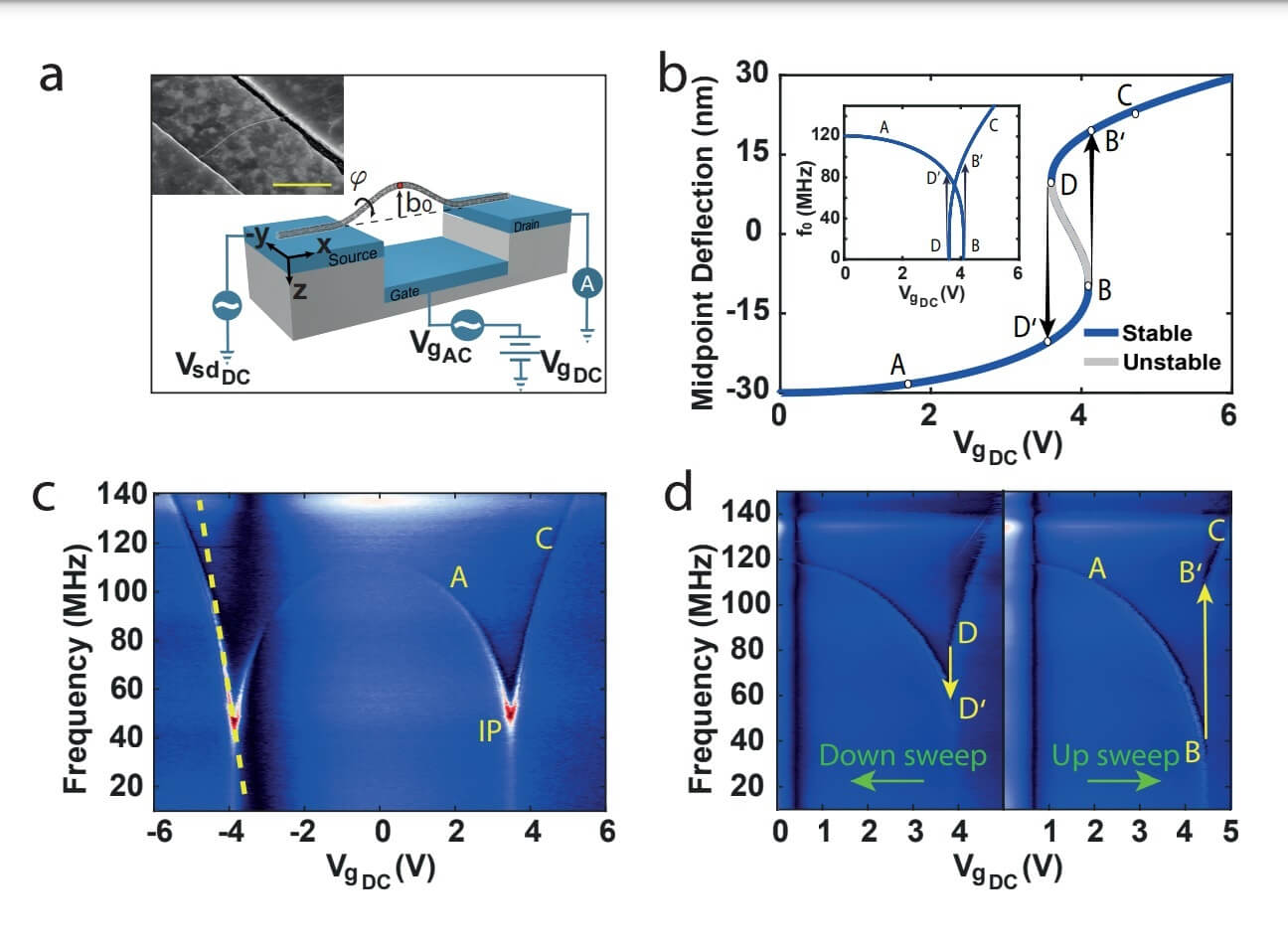The technology was developed by Prof. Yuval Yaish, Dr. Sharon Rechnitz and Dr. Tal Tavacnik from the Viterbi Faculty of Electrical and Computer Engineering

Prof. Yuval Yaish, Dr. Sharon Rechnitz, and Dr. Tal Tevachnik from the Viterbi Faculty of Electrical and Computer Engineering cracked one of the greatest mysteries in material science, through the development of an innovative device based on carbon tubes. The technology developed by Technion researchers extends the life of the device and significantly increases (tenfold!) its frequency sensitivity to external interference. Tiny carbon tubes were invented about two decades ago, and today form the basis of many electronic devices and heat transfer, due to their unique properties: strength, resistance to stretching and conversion of mechanical signals to electrical signals and vice versa.
resonator (resonator) is a device that traps waves inside it and amplifies them by returning them from side to side in a process called resonant amplification. Today in the world there are sophisticated and sophisticated resonators of various types, but also simple resonators familiar to all of us - for example, the sound box of a guitar, which amplifies the sounds produced by the strings, or the body of the bagpipe, which amplifies the sounds created by the mouthpiece of the instrument. As mentioned, the Technion researchers connected these two worlds - resonators and carbon tubes - and for the first time created resonators in two configurations possible stability - Like a bent hair clip that can be open or closed or a thin bar that when pressed it can bend up or down. This bending of the carbon tubes gives them new properties and enables high frequency control and three-dimensional realization of Euler-Bernoulli instability in the transition between the two stable states. Shrinking the dimensions of the resonator to the nanometer level improves its performance and provides a glimpse of quantum phenomena that are not available in MEMS devices - microelectromechanical systems. The devices produced by the Technion researchers confirm a theory from 2012, which discusses the mechanisms of energy loss in nanoscale systems. The study shows that thermal fluctuations of the tube and non-linear response of the resonator broaden the resonance frequency and decrease the quality factor (Quality Factor) of it.
The researchers demonstrate the dispersion of energy in the nanoscale space and present a completely new structure of nanoscale carbon tubes. In their estimation, the innovative development will have significant consequences in the development of electromechanical nanometer technologies, including particularly sensitive sensing technologies, improved memory, mechanical qubits and quantum computing. The study was published in the journal Nature Communications.. It is supported by the National Science Foundation (ISF), the Russell Berry Nanotechnology Institute (RBNI) and is assisted by the clean room infrastructure at the Micro & Nano Electronics Center (MNFU – Micro & nano Fabrication Unit).
For article B– Nature Communications- click here
More of the topic in Hayadan:
- On the way to molecular electronics
- Prof. Yaakov Ziv from the Technion won the AMT award for his contribution in the fields of information and communication
- Researchers at the Technion and the Tower Jazz company have developed a technology that adapts commercial transistors to the age of artificial intelligence

4 תגובות
Joseph are you suggesting that this could actually be used as a quantum transistor?
Sorry Porat, according to what Yosef says, this is not just public relations, but real progress...
Everything is written in the Torah and the Talmud, look at the nonsense they learn at the Technion "fluctuations" "qubits"... Gurnish with Gurnish
I wonder if I'm the only one who couldn't understand a thing and a half. It starts with the same "carbon tubes" that appear at the beginning of the article without any explanation as if every reader has a degree in chemistry, and from there it only deteriorates through "thermal fluctuations of the tube and a non-linear response of the resonator expand the resonance frequency and decrease its quality factor. " and up to the "dispersion of energy in the nanometer space". hallelujah!
What I did realize is that it might have a use for quantum computers, as with any new invention looking for some PR.
A quantum computer that is a semiconductor and not the big chandelier.
Quantum computer on a chip.